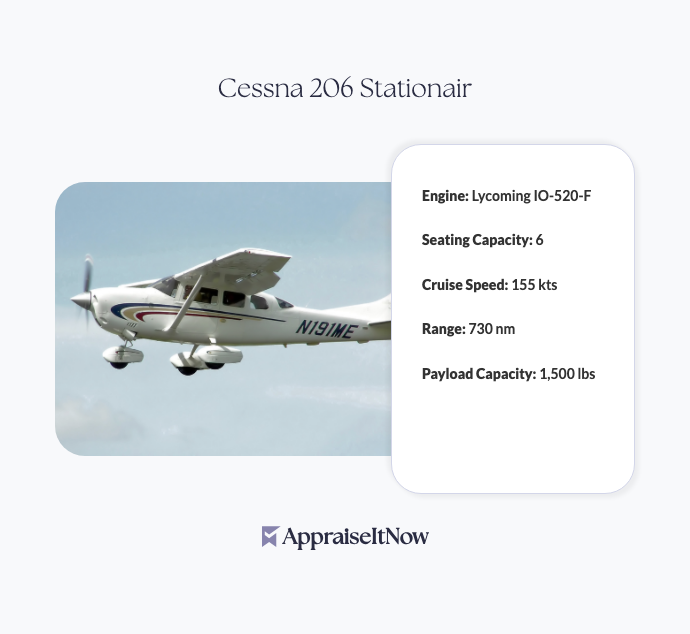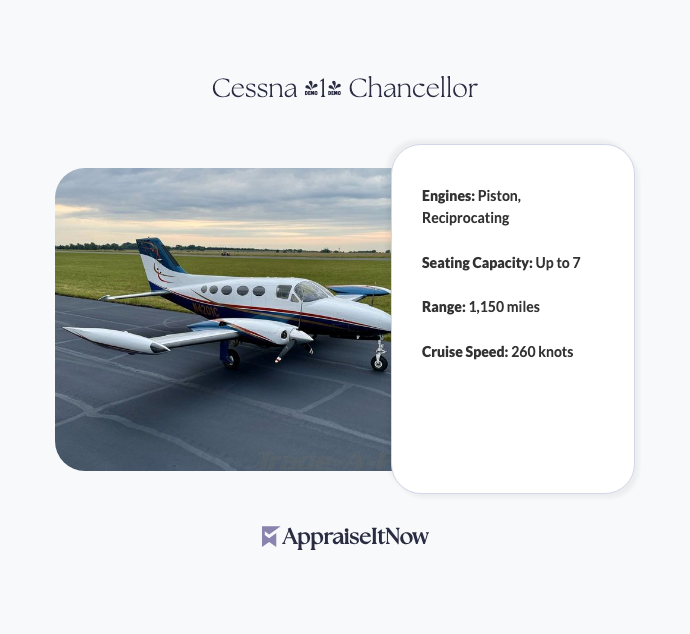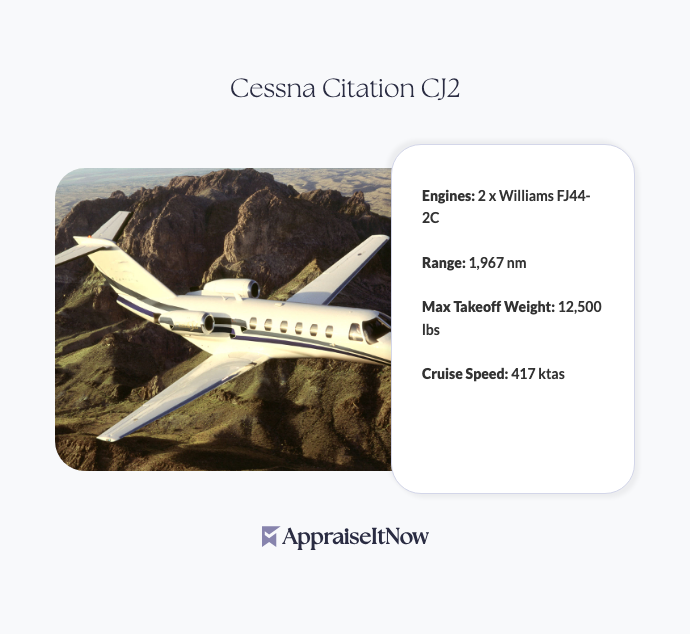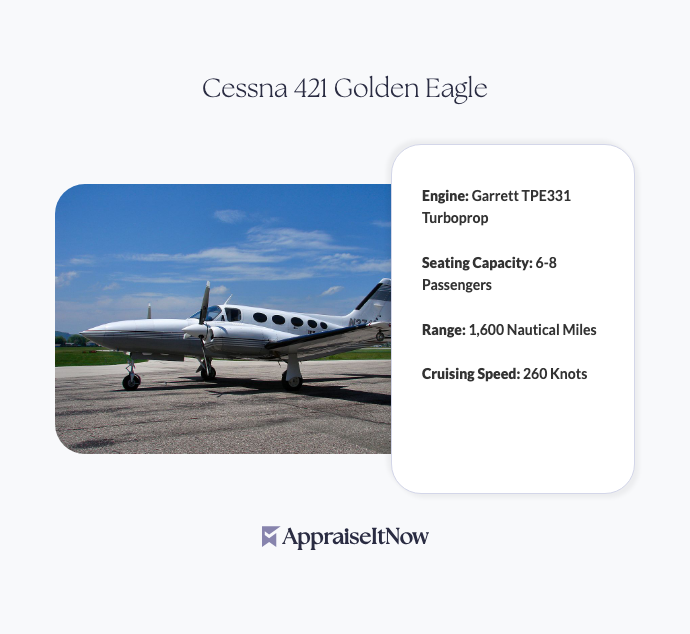<h1>How to Get Your Cessna 206 Stationair Appraised</h1>
<p>The Cessna 206 Stationair is one of aviation's most versatile and reliable single-engine aircraft, earning its place in hangars worldwide through decades of dependable service. Whether you're looking to buy, sell, or verify insurance coverage for your 206 Stationair, understanding how to get it properly appraised ensures you have accurate documentation and confident pricing for whatever your needs may be. With current market values ranging from <strong>$70,000 to $110,000</strong> depending on condition, age, and avionics, professional appraisal becomes essential to protect your investment.</p>
<h2>Why Professional Appraisal Matters for Aircraft</h2>
<p>Getting your Cessna 206 Stationair appraised by a credentialed expert provides more than just a price tag—it delivers documented proof of value that insurance companies, buyers, and financial institutions require. Since the 206 Stationair first took flight in 1964, over 9,500 units have been produced, making it one of the most established aircraft in the general aviation market. However, this production volume means significant variation exists between individual airframes, with factors like engine time, avionics packages, and maintenance history dramatically affecting true market value.</p>
<p>Professional appraisers understand these nuances where casual estimates fall short. When you're considering selling your 206 Stationair, an independent appraisal establishes credible market positioning that helps you avoid overpricing or leaving money on the table. For purchase decisions, professional valuation confirms you're paying fair market value rather than overpaying for an aging airframe or underpaying for a well-maintained gem.</p>
<div class="callout tip"><p><strong>Expert Insight</strong></p>
<p>The asking price and actual market value for a Cessna 206 Stationair can differ significantly—professional appraisal provides the objective data needed for confident negotiations.</p></div>
<h2>Understanding the Cessna 206 Stationair's Market Position</h2>
<p>The 206 Stationair holds unique standing in aviation because it serves multiple mission profiles equally well. Private owners value its spacious cabin and reliable Lycoming engine for personal transportation, while charter operators and bush pilots appreciate its rugged design and versatility for demanding operations. This broad appeal creates relatively stable market demand, though individual aircraft values fluctuate based on specific configurations and maintenance documentation.</p>
<p>The aircraft's fuel-efficient engine and proven engineering mean the 206 Stationair tends to hold its value better than many comparable aircraft. When considering whether Cessnas hold their value, the 206 Stationair consistently ranks among the best performers in the single-engine category. Well-maintained examples with low-time engines command prices at the higher end of the valuation range, while older airframes requiring maintenance investment settle toward the lower spectrum.</p>
<h2>Key Factors That Determine Your 206 Stationair's Value</h2>
<p>Your aircraft's specific worth within the <strong>$70,000–$110,000</strong> range depends on several interconnected factors that experienced appraisers evaluate systematically. The total flight hours on the airframe represent one of the most critical variables—aircraft don't wear out like automobiles, but time-dependent components like engines, propellers, and avionics do require attention. A 206 Stationair with 4,000 total airframe hours may command $25,000 more than an otherwise identical aircraft with 8,000 hours, especially if the higher-time airframe hasn't documented major overhauls.</p>
<p>Engine condition and remaining time-before-overhaul (TBO) dramatically impact valuation. A Lycoming engine with 400 hours since overhaul might add $15,000 to $20,000 in value compared to an engine approaching its 2,000-hour TBO with questionable maintenance documentation. Avionics packages vary significantly—modern glass cockpits with integrated GPS, autopilot, and weather systems can add $30,000 or more to an aircraft's value, while older steam-gauge panels may require upgrading to attract certain buyer categories.</p>
<table class='appraisal-table'>
<thead>
<tr>
<th>Factor</th>
<th>Impact on Value</th>
<th>Details</th>
</tr>
</thead>
<tbody>
<tr>
<td>Airframe hours</td>
<td>High</td>
<td>Lower time generally commands premium pricing</td>
</tr>
<tr>
<td>Engine condition</td>
<td>High</td>
<td>Recent overhaul significantly increases value</td>
</tr>
<tr>
<td>Avionics package</td>
<td>High</td>
<td>Modern glass cockpit adds substantial value</td>
</tr>
<tr>
<td>Maintenance records</td>
<td>Medium</td>
<td>Complete documentation supports higher valuations</td>
</tr>
<tr>
<td>Paint/interior condition</td>
<td>Medium</td>
<td>Cosmetic condition affects buyer appeal</td>
</tr>
<tr>
<td>Damage history</td>
<td>High</td>
<td>Significant damage substantially reduces value</td>
</tr>
</tbody>
</table>
<p>Interior condition, paint quality, and whether the aircraft has been involved in accidents or significant maintenance events all influence the final appraisal. An aircraft with complete maintenance records, a clean damage history, and cosmetically appealing condition sits at the market's premium end, while aircraft needing restoration or those with maintenance gaps settle lower.</p>
<h2>What Appraisers Examine During Inspection</h2>
<p>When you schedule an appraisal for your Cessna 206 Stationair, the certified appraiser conducts a comprehensive evaluation that goes far beyond a superficial inspection. They examine the airframe structure for corrosion, cracks, or previous repairs that might indicate hidden damage. The propeller receives detailed scrutiny for nicks, cracks, or modifications that affect safety and value. Engine parameters including compression, suction, vacuum, and electrical systems get tested to assess operational condition.</p>
<p>Documentation review becomes equally important—appraisers evaluate your logbooks, maintenance records, inspection reports, and service bulletins to confirm compliance with Federal Aviation Administration (FAA) requirements and assess the aircraft's actual maintenance history. If records are incomplete or disorganized, this typically reduces the appraised value since potential buyers must assume unknown maintenance issues. Conversely, impeccably documented aircraft with clear maintenance trails command premium valuations because buyers have confidence in the airframe's condition.</p>
<p>The appraiser also verifies the aircraft's registration status with the FAA, reviews any outstanding airworthiness directives (ADs), and confirms that all required inspections are current. For the Cessna 206 Stationair specifically, they'll check whether the aircraft meets any manufacturer service bulletins related to wing strut reinforcement or fuel system modifications that might be applicable.</p>
<div class="callout note"><p><strong>Documentation Value</strong></p>
<p>Complete maintenance records can increase your 206 Stationair's appraised value by 10-15% compared to identical aircraft with poor documentation.</p></div>
<h2>Selecting the Right Appraiser for Your Aircraft</h2>
<p>Not all appraisers possess equal expertise with general aviation aircraft. You want a professional with specific credentials in aircraft valuation and demonstrated experience with single-engine aircraft, ideally the Cessna 206 Stationair specifically. Look for appraisers holding certifications from recognized organizations like the American Society of Appraisers (ASA), International Society of Appraisers (ISA), or Aviation Appraisal Association of America (AAAA).</p>
<p>Verify that your appraiser can provide a report compliant with USPAP (Uniform Standards of Professional Appraisal Practice) standards, which insurance companies and financial institutions require. When discussing your aircraft's circumstances, experienced appraisers ask detailed questions about its mission profile—whether it's been operated primarily from paved airports or rough airstrips significantly affects wear patterns and value. They also inquire about your reasons for seeking appraisal, whether for insurance, sale, financing, or other purposes, as this context shapes their evaluation approach.</p>
<p>Getting your Cessna 206 Stationair appraised through a service like <a href="/types/airplane">AppraiseItNow</a> connects you with credentialed experts across the country who understand aircraft valuation intricacies that generalist appraisers may overlook. This specialized knowledge becomes critical when evaluating whether the 206 Stationair is a good plane for your specific needs, as condition assessments must account for how the aircraft will be utilized going forward.</p>
<h2>Understanding Appraisal vs. Market Listing Price</h2>
<p>A common misconception is that appraisal value equals selling price. In reality, an appraisal establishes fair market value—the price at which your aircraft would exchange between a willing buyer and willing seller, neither under pressure to buy or sell. Your actual listing price may exceed fair market value initially as you test buyer interest, and it will likely decrease over time as market exposure increases and serious buyers emerge.</p>
<p>The appraisal provides the data foundation for realistic pricing. If your appraiser determines fair market value at $85,000, listing your 206 Stationair at $95,000 might attract initial interest but will likely languish on the market without serious offers. Conversely, pricing at $75,000 may generate quick sales but leaves money on the table. The appraisal gives you confidence to price within the realistic market range and negotiate from an informed position.</p>
<p>How much is a Cessna 206 Stationair worth? The answer depends entirely on your specific airframe's condition, configuration, and market timing. Professional appraisal transforms this vague question into concrete data you can act upon with confidence.</p>
<h2>Insurance Considerations and Appraisal Documentation</h2>
<p>If you're appraising your 206 Stationair for insurance purposes, the appraisal report becomes essential documentation that insurers require to establish replacement cost coverage. Aviation insurance companies need accurate valuations to quote premiums and confirm adequate coverage limits. An underinsured aircraft leaves you exposed to catastrophic financial loss in case of damage or total loss, while overinsuring increases premiums unnecessarily.</p>
<p>Most aviation insurance policies accept USPAP-compliant appraisals completed by credentialed professionals. Submit your appraisal report along with your insurance application to ensure smooth policy issuance and accurate coverage limits. Updating your appraisal every few years maintains alignment with current market values, since aircraft values don't remain static—they reflect changing fuel prices, comparable aircraft availability, and general aviation demand trends.</p>
<h2>Different Aircraft Mission Profiles and Value Impact</h2>
<p>The Cessna 206 Stationair's value can vary significantly based on how it's been operated. Aircraft configured for bush flying with heavy-duty landing gear, reinforced fuselage components, and rugged interiors may have different valuations than identical airframes used exclusively for personal transportation from paved airports. Bush pilots asking "Is the Cessna 206 a good plane?" for backcountry operations will find it exceptionally capable, but these specialized configurations sometimes appeal to narrower buyer pools.</p>
<p>Similarly, aircraft equipped for charter operations with interior configurations optimized for passenger comfort and revenue generation may appeal to different buyers than owner-operated aircraft. Your appraiser evaluates how the aircraft's actual use history and current configuration align with buyer expectations, since specialized equipment sometimes increases value for targeted buyers but decreases it for general aviation market appeal.</p>
<h2>Timeline and Cost Expectations</h2>
<p>Professional aircraft appraisals typically require one to three business days from initial contact to report delivery, though timeline varies based on appraiser availability and aircraft location. Physical inspection usually takes two to four hours depending on the aircraft's condition and whether major disassembly is necessary. Appraisal costs for a Cessna 206 Stationair typically range from <strong>$400 to $800</strong>, depending on your location and the appraiser's experience level.</p>
<p>This investment is modest compared to the insurance protection and transaction confidence it provides. For aircraft valued at $70,000 to $110,000, an appraisal cost of $500-600 represents less than one percent of the aircraft's value while potentially saving thousands through accurate pricing or comprehensive insurance documentation.</p>
<div class="callout tip"><p><strong>Cost-Benefit Analysis</strong></p>
<p>Professional appraisal costs are typically fully recovered through accurate pricing alone—avoiding even a $5,000 pricing error makes the appraisal worthwhile.</p></div>
<h2>Getting Your Appraisal Report and Next Steps</h2>
<p>Once your appraiser completes the inspection and report, you'll receive comprehensive documentation detailing the aircraft's condition, valuation methodology, comparable aircraft analysis, and the final fair market value conclusion. This report serves multiple purposes—insurance companies use it for coverage verification, potential buyers review it during due diligence, and you have official documentation for personal records or estate planning.</p>
<p>The appraisal report explains the reasoning behind the valuation, breaking down how factors like flight hours, engine condition, and avionics package influenced the final number. This transparency helps you understand why your 206 Stationair falls within the $70,000-$110,000 range and where your specific aircraft positions within that spectrum. You can use this information to set realistic asking prices, negotiate confidently with buyers, or verify that quoted offers align with professional valuation.</p>
<p>Professional appraisal services like <strong>AppraiseItNow</strong> streamline the entire process—you submit photos, documentation, and aircraft details securely online, certified appraisers conduct thorough inspections, and you receive USPAP-compliant reports suitable for any purpose. This tech-enabled approach provides the expertise of credentialed professionals without the hassle of coordinating complex logistics.</p>
<hr />
<div class="callout note"><p><strong>Key Takeaway</strong></p>
<p>A certified appraisal of your Cessna 206 Stationair provides authoritative documentation of your aircraft's fair market value, ensuring accurate insurance coverage, confident pricing for sale or purchase, and professional-grade protection for your aviation investment. Whether you're managing a fleet for charter operations, preparing for aircraft sale, or verifying coverage limits with your insurer, professional appraisal delivers the credible valuation data that stands up to scrutiny and protects your interests.</p></div>







.avif)







